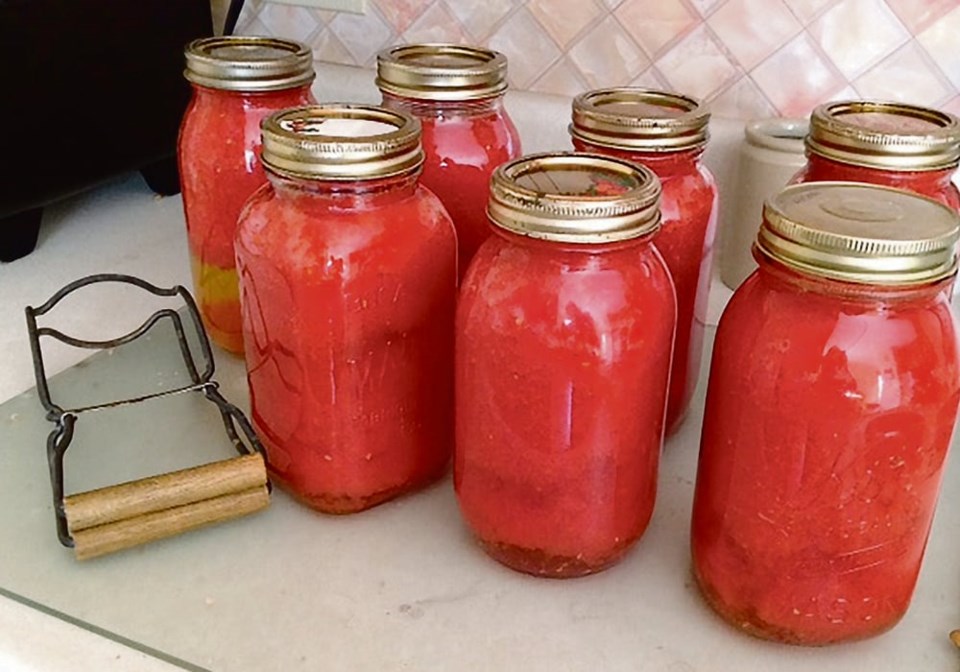Exploring the cool, dark recesses of Grandma’s dugout cellar, I would come across the dilapidated old cupboard braced against the far side of the coal bin. An ambitious spider had draped cobwebs from shelf to shelf. I gingerly reached through its gauze curtain to discover a veritable treasure chest of good eating.
High bush cranberry sauce, green gage plums, purple chokecherry jam — Gem jars contained just what their name implied.
At mealtime, I helped Grandma tote the preserves up the steep cellar steps and deposited the jars at the edge of the trapdoor in the kitchen. The contents of each sealer were emptied into the appropriate serving dish. Clear scarlet jelly gleamed through cut glass, green tomato relish filled the oval pickle dish and golden peach halves floated around a big silver spoon in the fruit bowl.
Despite their fragile appearance, preserving jars were amazingly sturdy. Oh, once in a while an imperfect seal allowed the fruit to ferment, and it exploded with a bang in the middle of the night.
Ordinarily, such losses were few and far between, but during wartime, fruit cupboards spontaneously drenched in distilled plums and shattered glass frequently exasperated housewives.
They blamed it on the poor quality of rubber in the sealer rings. Soon the battle lines were drawn — red rings versus white. With so much pride at stake, neither side wanted to acknowledge their losses so when a sealer would defect, the fermented contents were quietly emptied on the ash pile.
Before long, hilarious stories about inebriated roosters surfaced at school. Kids regaled their pals with vivid descriptions of intemperate roosters staggering drunkenly across rural farmyards. As one rooster after another succumbed to the ash pile of dissipation, embarrassed housewives called a halt to any further discussion about sealer rings.
The war ended, fresh produce became available year-round, and the waste-not, want-not philosophy that had characterized so many rural homes was shoved into the background.
Along with it went the lowly quart sealer and dozens of its contemporaries, relegated to a basement shelf to gather dust — cast down but not cast out.
A good thing, too, because many thrifty consumers are asking Grandma for her old preserving jars — empty but not useless.
Outfitted with shiny new tops and filled with homegrown produce, they now counteract the growing indignation stemming from shrinkflation. Not only that, but while organizing my collection of sealers to prepare for this fall’s bounty, I came across oldies having a pale green shade of glass and sold them to an antique dealer.
Whether used for saving money or making money, those old jars are priceless.




